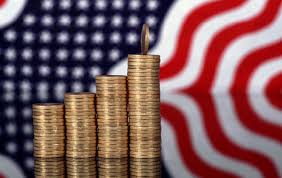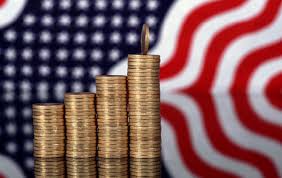
Pointers indicate towards a moderate economic growth in the fourth quarter as more households chose to boost savings taking advantage of the rising incomes, resulting a very negligible rise in the U.S. consumer spending in October.
A boost in savings led the mark to reach their highest level in nearly three years in the U.S.
Despite the low spending on consumer items, other data on Wednesday showed a surge in business spending plans in October and a drop in new applications for unemployment benefits last week. Analysts expect that despite the low consumer spending, the chances of a Federal interest hike next month are quite high.
"As far as fourth-quarter GDP goes, that is likely to keep estimates close to 2 percent. That's enough to justify a rate hike as long as next Friday's employment report is not a disaster," said Chris Low, chief economist at FTN Financial in New York.
Similar to the rise in September, the consumer spending edged up 0.1 percent last month, the Commerce Department said. The figures indicate that there has been a slowdown in the pace of consumer spending from the third quarter's brisk 3.0 percent annual pace. Consumer spending accounts for more than two-thirds of U.S. economic activity.
Analysts predict that the anticipated drag from an ongoing inventory reduction would team up with the tepid rise in consumer spending to keep the U.S. economy at around a 2 percent growth rate in the fourth quarter.
However some support to the economy in the third quarter could come from the expected spending in business.
The non-defense capital goods orders excluding aircraft increased 1.3 percent last month after rising 0.4 percent in September, said the Commerce Department. The non-defense capital goods orders is viewed as proxy for business spending plans.
Indicating that the worst of the drag from a strong dollar and deep spending cuts by energy firms was over, November data indicates a solid increase in manufacturing output in October.
As the Fed assessed the degree to which dollar strength and a slowing in economies overseas would weigh on the United States, it had held off raising rates at their last two meetings.
"The surge in core capital goods orders could be a crucial signal that this important sector of the economy may be at a turning point, further bolstering the Fed's confidence in the sustainability of the economic recovery," said Millan Mulraine, deputy chief U.S. economist at TD Securities in New York
The strong dollar and spending cuts in the energy sector has also held back the manufacturing sector which accounts for 12 percent of the economy. Since June 2014, there has been an appreciation of 18.1 percent of the dollar against the currencies of the United States' main trading partners.
But that pace is gradually slowing down. Economists also believe that the bulk of spending cuts by oil field firms like Schlumberger in response to lower crude prices have already been implemented.
While the dollar hit an eight-month high against a basket of currencies, the U.S. Treasury debt prices pared gains after the reports.
(Source:www.reuters.com)
A boost in savings led the mark to reach their highest level in nearly three years in the U.S.
Despite the low spending on consumer items, other data on Wednesday showed a surge in business spending plans in October and a drop in new applications for unemployment benefits last week. Analysts expect that despite the low consumer spending, the chances of a Federal interest hike next month are quite high.
"As far as fourth-quarter GDP goes, that is likely to keep estimates close to 2 percent. That's enough to justify a rate hike as long as next Friday's employment report is not a disaster," said Chris Low, chief economist at FTN Financial in New York.
Similar to the rise in September, the consumer spending edged up 0.1 percent last month, the Commerce Department said. The figures indicate that there has been a slowdown in the pace of consumer spending from the third quarter's brisk 3.0 percent annual pace. Consumer spending accounts for more than two-thirds of U.S. economic activity.
Analysts predict that the anticipated drag from an ongoing inventory reduction would team up with the tepid rise in consumer spending to keep the U.S. economy at around a 2 percent growth rate in the fourth quarter.
However some support to the economy in the third quarter could come from the expected spending in business.
The non-defense capital goods orders excluding aircraft increased 1.3 percent last month after rising 0.4 percent in September, said the Commerce Department. The non-defense capital goods orders is viewed as proxy for business spending plans.
Indicating that the worst of the drag from a strong dollar and deep spending cuts by energy firms was over, November data indicates a solid increase in manufacturing output in October.
As the Fed assessed the degree to which dollar strength and a slowing in economies overseas would weigh on the United States, it had held off raising rates at their last two meetings.
"The surge in core capital goods orders could be a crucial signal that this important sector of the economy may be at a turning point, further bolstering the Fed's confidence in the sustainability of the economic recovery," said Millan Mulraine, deputy chief U.S. economist at TD Securities in New York
The strong dollar and spending cuts in the energy sector has also held back the manufacturing sector which accounts for 12 percent of the economy. Since June 2014, there has been an appreciation of 18.1 percent of the dollar against the currencies of the United States' main trading partners.
But that pace is gradually slowing down. Economists also believe that the bulk of spending cuts by oil field firms like Schlumberger in response to lower crude prices have already been implemented.
While the dollar hit an eight-month high against a basket of currencies, the U.S. Treasury debt prices pared gains after the reports.
(Source:www.reuters.com)





